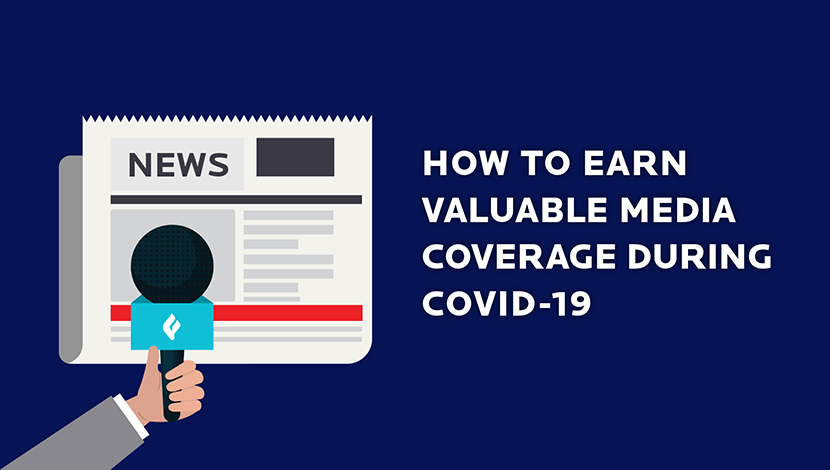
As COVID-19 continues to impact the world, journalists are working diligently to deliver information about the pandemic. The relationship between PR professionals and journalists is crucial as resources dwindle. Some newsrooms are experiencing layoffs and furloughs due to declining revenue, so the remaining journalists are working harder than ever.
The media are hungry for unique, positive and easy-to-share stories amid a predominantly negative news cycle. With all pitches, it’s always important to be targeted and relevant. In times of crisis, it’s essential if you want to stand out. Here are some tips for earning valuable media coverage, while we continue to navigate the news cycle during this global crisis.
Make sure your pitch is targeted and relevant
Newsrooms remain heavily focused on COVID-19, so it’s important to make sure your pitch isn’t off-base. As the crisis has become our equilibrium, there’s beginning to be some interest in non-COVID-19 stories. You must be strategic in how you present them. Here are some triggers the media are currently interested in:
- Is your company offering a service in a unique way?
- Are you doing something to boost morale among employees during these uncertain times?
- Are your employees working from home? Do you have any unique best practices to share?
- Job openings: Is your company hiring?
- Human interest pieces that show people coming together: Have you organized a way to help or give back to your community?
- Is there a national trend happening that you can localize?
- Feel-good stories not related to COVID-19
How to reach out and pitch someone
Research shows e-mail is still the best method for pitching, but keep in mind journalists receive an extraordinary number of e-mails. The most important thing is to be thoughtful and as helpful. Journalists must already be interested in the subject matter you are pitching. Do your research. Has he or she previously covered the topic or something similar?
Next, try to think of a unique way to grab attention. Consider turning to social media, where many journalists share their own stories. Research shows Twitter is one of the most valuable social media platforms for journalists. One tactic you might consider is to Tweet or comment, letting the journalist know you have a story idea aligned with something he or she has previously covered. Give them a one-sentence preview of your pitch and tell them you’ll send an e-mail with more information.
When to pitch
Because of the extremely high traffic in journalists’ inboxes, you should always consider the timing of your pitch.
- It’s a good idea to send your pitch as early in the day as possible—at least before noon. This way, you’re getting to them before they get too slammed.
- Journalists are less strict about what day, but we find earlier in the week is better. Don’t rule out Fridays. Journalists need weekend news too.
- If you haven’t heard back, it’s OK to follow-up in a few days. But remember to be patient. Times are tough and journalists are strapped for resources.
What to include in your pitch
Keeping the pitch short and simple is key, but you can provide resources to help the journalist get the job done quickly and seamlessly. Here’s what is important to consider when crafting a pitch:
- Tell the journalist why he or she should care about your news. Hint: This should be why the readers, viewers or listeners (your key audience) should care.
- Make sure your subject line is attention-grabbing. Boring subject lines do not get opened.
- Let the journalist know if interviews are available and provide assets up front.
Make their job as easy as possible
If you can put together a high-quality news package to share within your pitch, your work might be done. The likelihood of a journalist picking up your story increases exponentially. And they might not even need anything else from you. Here are some things to include to make a journalist’s job as easy as possible:
- Write a press release so it can be printed as-is or read on air.
- Provide video footage and photographs. They must be high quality. You can include an interview, but keep in mind the journalist still might want to conduct their own. Provide captions for photos.
- Craft sample social media posts that can be customized and easily shared.
- Have interview sources readily available and trained on video conferencing software like Zoom, Skype and Microsoft Teams.
- Facilitate any opportunity and ensure you follow-up with any additional requested information. If nothing further is required, remember to send a thank-you note.
If your company has good news to share, we can help you position messages and determine where it appropriate to deliver your information. Let us help—contact us today!
